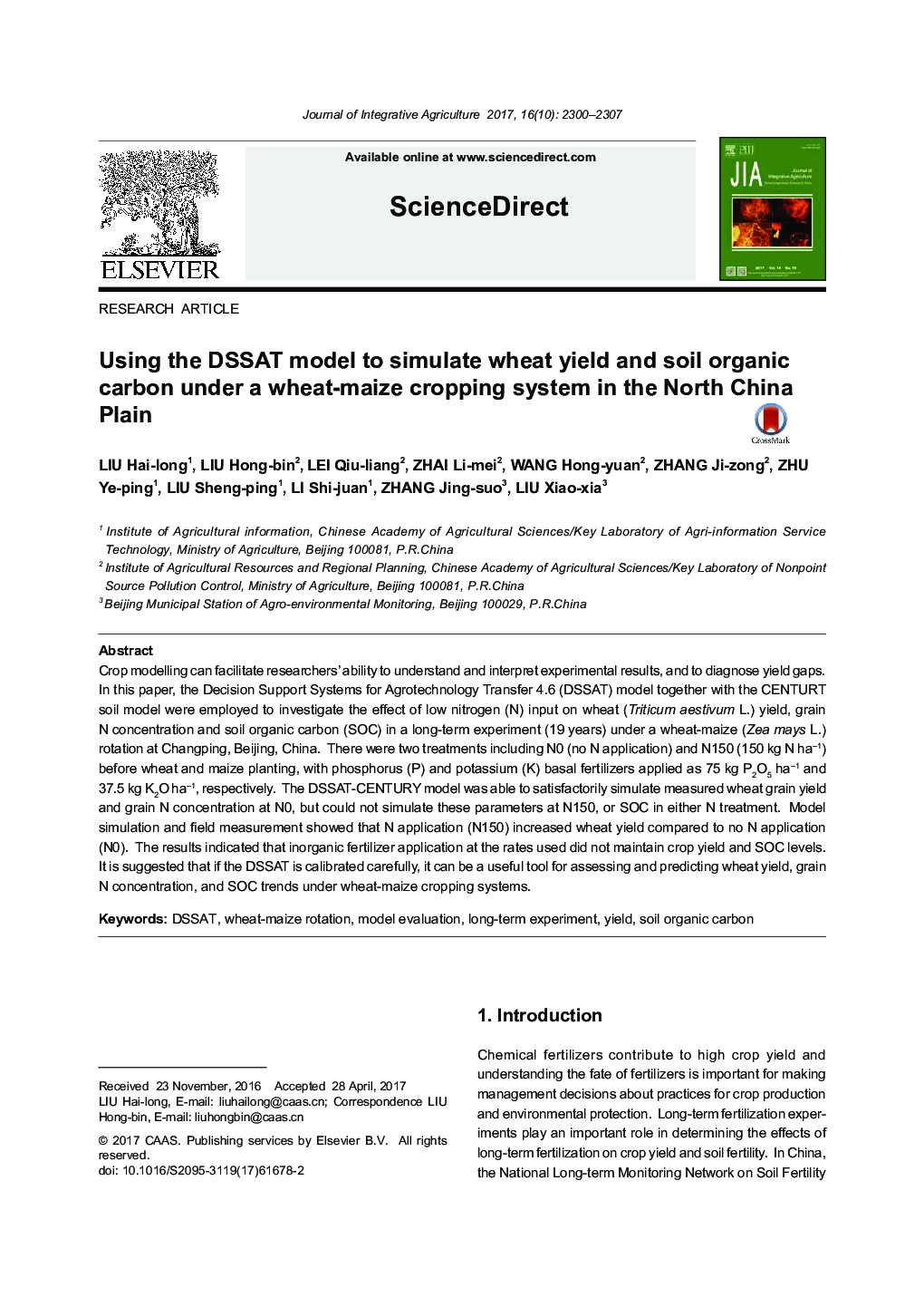| Article ID | Journal | Published Year | Pages | File Type |
|---|---|---|---|---|
| 8875848 | Journal of Integrative Agriculture | 2017 | 8 Pages |
Abstract
Crop modelling can facilitate researchers' ability to understand and interpret experimental results, and to diagnose yield gaps. In this paper, the Decision Support Systems for Agrotechnology Transfer 4.6 (DSSAT) model together with the CENTURT soil model were employed to investigate the effect of low nitrogen (N) input on wheat (Triticum aestivum L.) yield, grain N concentration and soil organic carbon (SOC) in a long-term experiment (19 years) under a wheat-maize (Zea mays L.) rotation at Changping, Beijing, China. There were two treatments including N0 (no N application) and N150 (150 kg N haâ1) before wheat and maize planting, with phosphorus (P) and potassium (K) basal fertilizers applied as 75 kg P2O5 haâ1 and 37.5 kg K2O haâ1, respectively. The DSSAT-CENTURY model was able to satisfactorily simulate measured wheat grain yield and grain N concentration at N0, but could not simulate these parameters at N150, or SOC in either N treatment. Model simulation and field measurement showed that N application (N150) increased wheat yield compared to no N application (N0). The results indicated that inorganic fertilizer application at the rates used did not maintain crop yield and SOC levels. It is suggested that if the DSSAT is calibrated carefully, it can be a useful tool for assessing and predicting wheat yield, grain N concentration, and SOC trends under wheat-maize cropping systems.
Related Topics
Life Sciences
Agricultural and Biological Sciences
Agricultural and Biological Sciences (General)
Authors
Hai-long LIU, Hong-bin LIU, Qiu-liang LEI, Li-mei ZHAI, Hong-yuan WANG, Ji-zong ZHANG, Ye-ping ZHU, Sheng-ping LIU, Shi-juan LI, Jing-suo ZHANG, Xiao-xia LIU,
